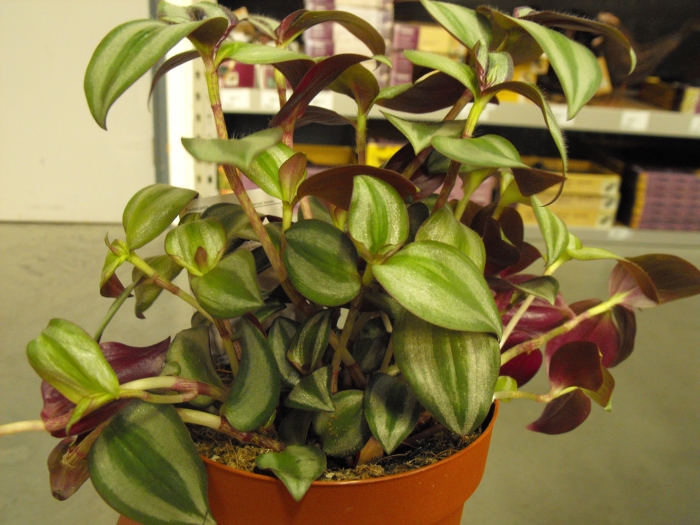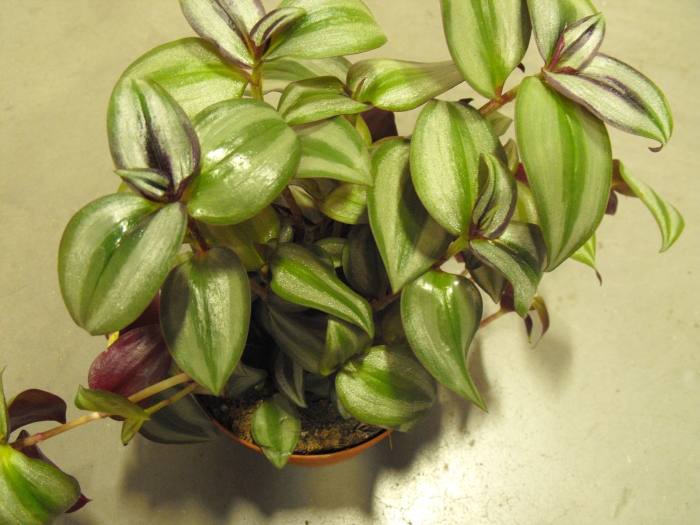






There's a number of tradescantia varieties very similar in looks, how they're grown and their growth habit, including the T. zebrina (has dark green leaves with silver bands), the T. fluminensis variegata with cream stripes and quicksilver which has white stripes. Then there’s the T. pallida from the same genus which is sometimes named wandering jew plant, but looks very different from the T. fluminensis and zebrina.
Foliage: Fleshy oval or lance shaped leaves are produced from the pendant stems (growing a couple of feet or so long). These small leaves have a shiny appearance and grow to about 2 - 4 inches long with pointed tips. The underside of a leaf is purple in color on the zebrina and new leaves appear purple at first, then turn green. In the wild or grown in gardens (grown as a bedding plant) stems take root at the nodes, but indoors in a hanging basket or container they grow and hang over the sides.
Flowering: The small non showy flowers are white in color, appearing during summer usually and at other times (depending on the conditions). These flowers appear in clusters, and display three small petals.
Care level and growing: Wandering jew plants are pretty simple to care for and maintain, although providing plenty of bright light is important. Tradescatia naturally become spindly and need to be pruned regularly and pinching stems will encourage fuller growth, improving it's appearance.

Spindly growth and bare stems: This happens naturally with age for this plant but lack of light, water or plant food can also cause spindly growth. If the plant is old and conditions are fine (water, light etc.) then it could be time to replace it.
All green leaves: Variegated leaves turning green and losing their variegation is most likely due to too much light.
Limp stems: Limp stems is usually a sign that the plant is lacking water
Copyright © www.100flowers.win Botanic Garden All Rights Reserved